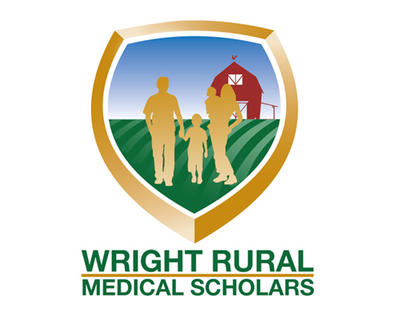
The Wright Rural Medical Scholars program continues its mission to develop and nurture physicians pursuing rural practice in Ohio by placing students from the Boonshoft School of Medicine into clinical rotations at health systems in rural West Central Ohio. While living and learning in rural communities near the Wright State University—Lake Campus in Celina, students gain knowledge of rural health, rural lifestyles, and help provide care to the area’s residents.
There are three components within the Wright Rural Medical Scholars program. They include the rural track, stand-alone rural experiences, and Advocates for Rural Medicine, a student organization at the medical school. The rural track is for students who want an extensive rural clinical education experience and who plan to practice in a rural community after they complete their training. Acceptance to the rural track is competitive, and students apply during their first year of medical school. The students selected to be on the rural track are required to complete rural-based activities throughout their undergraduate medical education, including a scholarly project. Upon the successful completion of all requirements, those in the rural track will be recognized at graduation.
Students not in the rural track still have opportunities to participate in rural activities, such as single rural clerkships or electives. These students often have a strong interest in underserved communities, and a rural experience gives them the opportunity to round out their education, which often also includes experiences with urban medicine in Dayton, as well as international experiences as part of the global health program. Single rural experience students often also have an interest in public health and learning more about how the public health challenges of a rural community are different from urban and suburban communities, even if the communities are not geographically that far apart, as is the case with the Wright State campuses in Dayton and Celina.
“We have students who are very committed to a career in rural medicine,” said Lori Martensen, director of the Wright Rural Medical Scholars program. Our goal is to have three to five alumni in each class practicing in a rural community. If we accomplish this, we would be one of the leading allopathic schools in the nation for rural physician workforce development. An expert in the field recently said most medical schools average two alumni per class working in a rural setting.”
All Boonshoft School of Medicine students may become members of the student organization Advocates for Rural Medicine. Within the student organization, medical students learn about the unique challenges and rewards that come with practicing medicine in a rural community, such as the broader scope of work primary care physicians have, due to the lack of certain specialties in rural communities. Students also learn about how work and personal relationships overlap in rural communities, where physicians shop in the same stores as their patients, and the patients are often coaching or teaching the physician’s children.
The goal is to keep interested Wright State medical students connected with rural areas as much as possible so that their desire to work in rural regions remains strong. The Wright Rural Medical Scholars program looks to place rural-focused students into rural communities “early, often, and for extended periods of time” during their medical education.
“We are listening to the alumni who plan to become rural physicians. They tell us how valuable their rural clinical rotations were in helping them discern that they were on the right path with their career goals,” Martensen said. “The current rural track students tell us they will gladly take any rural placement they receive.”
Boonshoft School of Medicine faculty and staff have worked diligently to develop distance education options for didactics courses, which allow for full participation from students at rural sites without requiring them to return to Dayton. Distance education is essential for the future growth of the rural program.
“We currently have students spending almost half of the third year at a rural site,” Martensen said. “In the 2020-21 school year, rural track students will be able to complete more than half their clerkship year at rural sites. With distance education options available, students have fewer required trips to Dayton, which allows them to become more fully immersed in the rural community. Students at our rural sites have housing provided for them, and we are starting to see rural track students give up apartments in Dayton or only have them for part of the year. At some of our rural sites, I’d like to get it to six to nine months of the third year that can be done rural. But we have got some time before we get there.”
Martensen would also like to increase the amount of scholarship monies available to medical students who wish to complete rural rotations. Medical students in the Wright Rural Medical Scholars program have been able to take advantage of scholarships offered by health systems around the Lake Campus, but more support could greatly impact student success.
“We are the only medical school in Ohio whose rural program revolves around clinical rotations in rural communities. Other medical schools in Ohio have a rural pathway, but it is a student learning community where the activities are more classroom-based, such as case studies, guest speakers, or extra mentoring. One way is not better than the other, but we feel that by making our rural program all about the clinical experience, the Boonshoft School of Medicine is unique in what it is offering our students.”
The Wright Rural Medical Scholars program is funded by Ohio Area Health Education Center funds. Health Path of Ohio provided the program with more than three years of initial funding.
—Daniel Kelly

